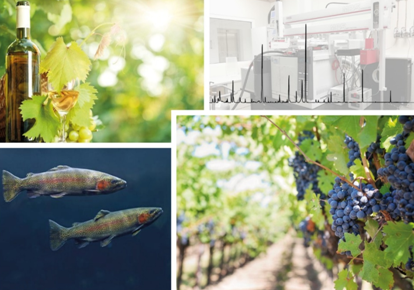Evaluation of spectral methods for assessing food authenticity and quality
SUPERVISOR: Stephan HANN
PROJECT ASSIGNED TO: Bernadette MOSER
Food authentication is the analytical process to verify that a food product is in accordance with its label description (Danezis et al., 2016). Food quality can be specified in terms of a traceable origin, known chemical composition, adequate physical properties, satisfying sensory evaluation, safety and health safeguards with respect to microbiological and toxic contamination and it is influenced by the processing and storage of the products (Borràs et al., 2015). The interest of consumers for food authenticity and quality is steadily increasing, however, determination of these attributes is a challenging issue facing the food industry. Reliable and rapid analytical techniques must be available along the food chain to verify the nature of food (Broski, 2011). Near infrared (NIR) spectroscopy is routinely used for the continuous monitoring and controlling of process and product quality in the food processing industry. Currently, the focus is on the development and application of small and cheap portable NIR spectrometers (Huang et al., 2008). Furthermore, hyperspectral imaging, a technique which combines conventional imaging and spectroscopy, is a promising tool for non-destructive food analysis as it can be used both for applications in the field and for direct in-process control (Gowen et al., 2007).
The primary goal of this PhD-project is the development and implementation of novel spectral methods, namely NIR handheld spectrometers and NIR hyperspectral imaging, for the assessment of the freshness and quality of fish and for the determination of the optimum harvest date and quality of wine grapes. For validation of the developed applications, it is essential to inter-compare the spectral data and information with alternative, conventional methods. In this thesis, metabolomics by accurate molecular mass spectrometry will serve as reference technique for validating the spectral methods. For measuring volatile organic compounds present in fish filets and wine grapes, new methods based on gas chromatography quadrupole time-of-flight mass spectrometry (GC-QTOFMS) with solid-phase microextraction (SPME) or dynamic headspace (DHS) as sample preparation techniques will be applied. Furthermore, grape juice will also be analyzed with liquid chromatography time-of-flight mass spectrometry (LC-TOFMS) for cross-validation of the spectral methods.
With the above-mentioned analytical techniques, metabolites, that are characterizing grape ripeness will be detected in order to define the optimum harvest date of wine grapes. Also, metabolic compounds, which change during the storage of fish filets will be discovered in this work in order to identify potential indicators of fish quality. Again, the results of the NIR measurements will be cross-validated via inter-comparison with the results of the GC- and LC-MS based workflows. For this purpose, combining the outputs of the different methods in a big data fusion approach is of outmost importance. Accordingly, a major focus of the work concerns the optimization and implementation of new chemometric models to improve the information content of the spectral methods in the context with food authenticity and quality.

